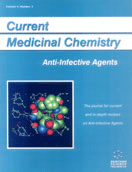Abstract
Infections caused by Aspergillus species are an emerging cause of morbidity and mortality in a variety of immunocompromised patients, despite profound environmental protection and the widespread prophylactic use of agents with anti-Aspergillus activity. At the present time, no firm conclusions can be drawn on the use of chemoprophylaxis, mainly due to the lack of reliable, randomized trials. Therefore, universal prophylaxis should be discouraged and prevention should be targeted towards well-defined high-risk patients, although only as part of a properly designed clinical trial. The crude mortality rate of invasive aspergillosis remains unacceptably high and results at least partly from difficulties in obtaining a reliable diagnosis at an early stage of the disease. The concept of empirical antifungal therapy has been introduced in an effort to overcome these diagnostic obstacles, especially since the early implementation of antifungal therapy appears to be the crucial prerequisite to improve the det rimental outcome of established disease. However, the concept has not been sufficiently validated and is not devoid of significant risks and disadvantages. The implementation of sensitive and predictive new diagnostic tools, such as galactomannan detection, high-resolution pulmonary CT-scanning and detection of aspergillar DNA, may allow a more targeted pre-emptive approach, directed towards the high-risk patients and based upon a battery of clinical, radiological and microbiological clues, though without histopathological proof. The high mortality rate results also from shortcomings of the currently available therapeutic arsenal. Amphotericin B, flucytosine and itraconazole are associated with low success rates and are hampered by serious infusion- or drug-related toxicity, by hazardous drug-drug interactions, by pharmacokinetic problems and by the development of resistance. In recent years, several companies have launched new compounds into preclinical and clinical trials. Some of these agents target the fu ngal cell wall in stead of the cell membrane. They exert their action through inhibition of the synthesis of critical compounds of that fungal cell wall, not present in mammalian cells (e.g. inhibitors of β-(1,3)-D-glucan synthesis). This article will focus on new therapeutic approaches (risk-adapted or targeted strategy) and upcoming antifungal agents with anti-Aspergillus activity, in particular voriconazole and caspofungin acetate.
Keywords: Aspergillosis, Anti-Aspergillus, Itraconazole, Terbinafine, Antifungal agents, Voriconazole, Pneumocandin
 19
19

